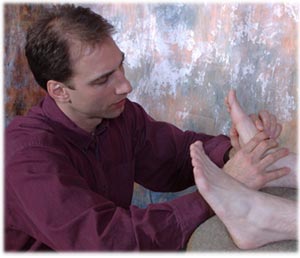Is Reflexology Regulated?
Only two states (North Dakota and Tennessee) currently license reflexologists. Washington requires reflexologists to become certified with the Department of Health.
Otherwise, cities and states have distinct requirements and regulatory agencies for practicing reflexologists.
Reflexology curriculum
A number of workshops and schools offer reflexology as part of the curriculum. A typical beginning level reflexology course consists of approximately 15 - 30 hours of class time including lecture, demonstration, and hands-on practice.
Massage schools and reflexology
Massage schools are now teaching reflexology as one of the techniques a practitioner can learn, but it is important to recognize that massage therapists have a different orientation than reflexologists. A massage therapist is focused on manipulating the soft tissues, and soft tissue manipulation techniques do not apply to the feet. A reflexologist applies pressure to reflex points, and by an internal mechanism, not directly related to manipulation of the tissue, creates relaxation and release of tension.
Massage therapists also spend a small percentage of their studies on reflexology (typically 2-3 weeks), whereas a student of reflexology spends 100% of her or his time in a longer course studying the art and science of reflexology. Thus, the breadth and depth of knowledge and experience in reflexology is much greater for the reflexology student than that acquired by the massage student.
Certification requirements
The American Reflexology Certification Board offers a well-recognized national certification in reflexology. This requires:
110 hours in:
- Anatomy and physiology
- Understanding the body's systems
- Reflexology history
- Reflexology theory and practices
- Business and professional ethics
Additional requirements:
- 100 hours of hands-on work with a qualified supervisor
- Passing a written national exam
- Completion of a practical exam
- Submission of 90 documentations of case studies
 There is also a code of conduct and standardized care associated with national certification. In order to maintain certification, reflexologists must qualify annually and support their certification with continuing education courses.
There is also a code of conduct and standardized care associated with national certification. In order to maintain certification, reflexologists must qualify annually and support their certification with continuing education courses.
In addition, instructors of reflexology must be accredited by the American Commission for Accreditation for Reflexology Education and Training, which measures their ability to meet national, professional standards.
Contact American Reflexology Certification Board for a list of nationally certified practitioners.

